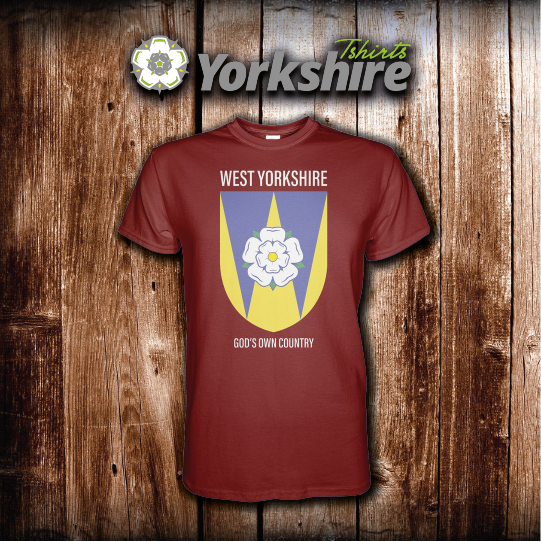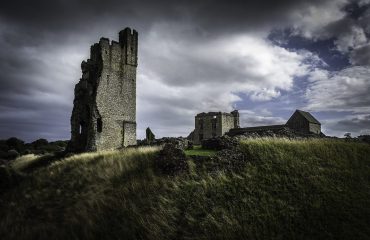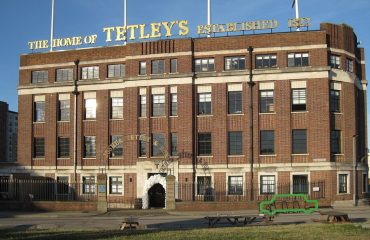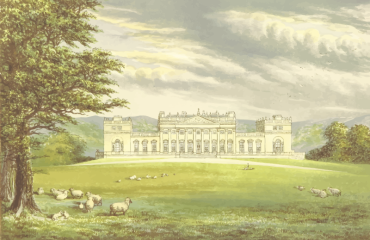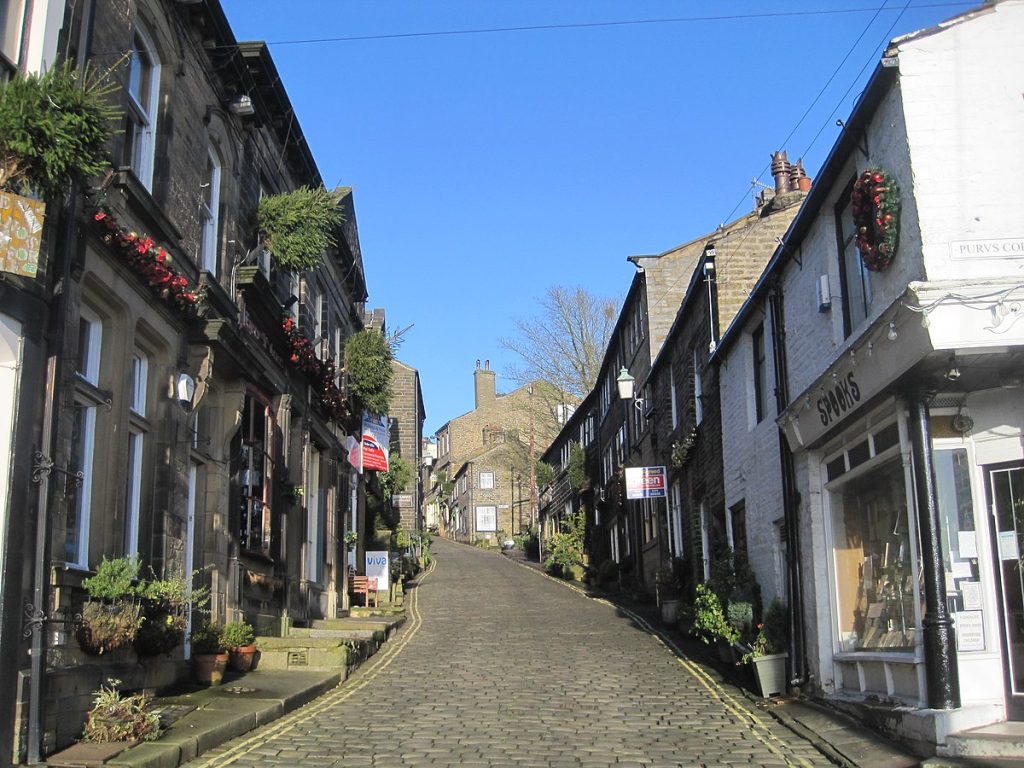
Haworth is a village surrounded by moorland and rolling hills, with cobbled streets and antique style stores and buildings. Haworth is a town that mirrors the past. With the train station frequently playing host to vintage steam trains passing and stopping. Featuring a 1940’s weekend where the whole village is decorated making it look like a time capsule. Haworth is a haven for independent businesses from handmade chocolates to antiques and small art venues. With the village being accredited as a Fairtrade village. It is a well known tourist destination due to its association with the Bronte sisters and the old preserved railway.
History
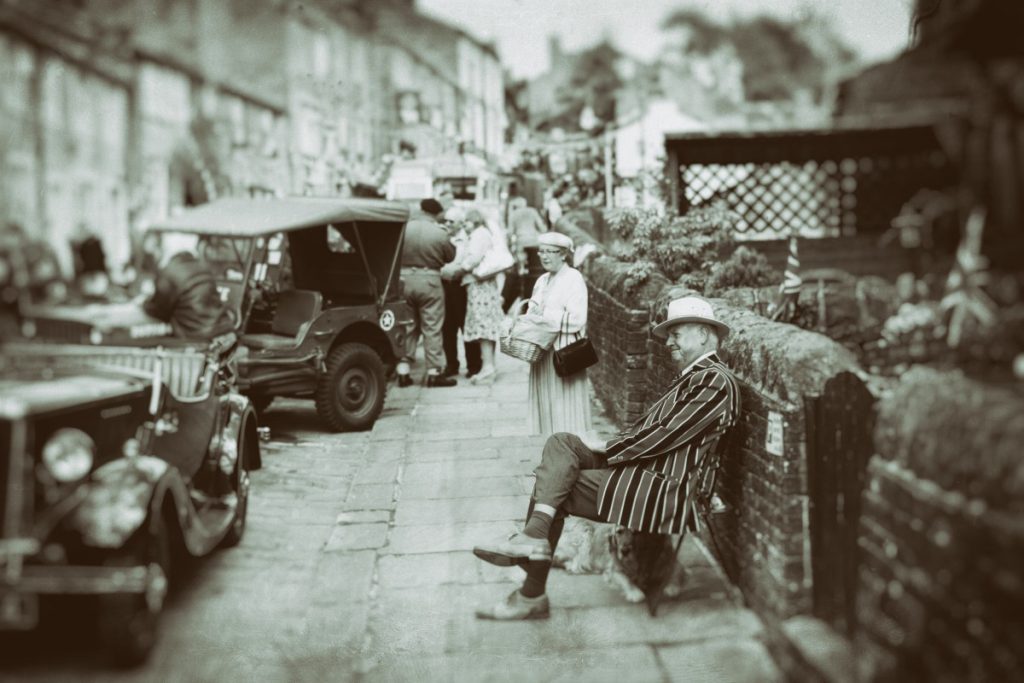
Haworth was first mentioned as a settlement within itself in 1209. Its name is assumed to mean an enclosure of hawthorn or hedges. The history of Haworth really comes into its own during the 19th century. During those times the main industry in Haworth was the production of yarn and cloth. Specifically the high quality worsted woollen yarn creating fine cloth with long fibered wool. The work was carried out in factories across the valley. The biggest in Haworth being Bridgehouse Mills close to the beck in the valley below the village. A census in the 1800’s showed that many of the households were majoritively employed in this textile industry. Either working together or in complement to each other.
Bronte heritage
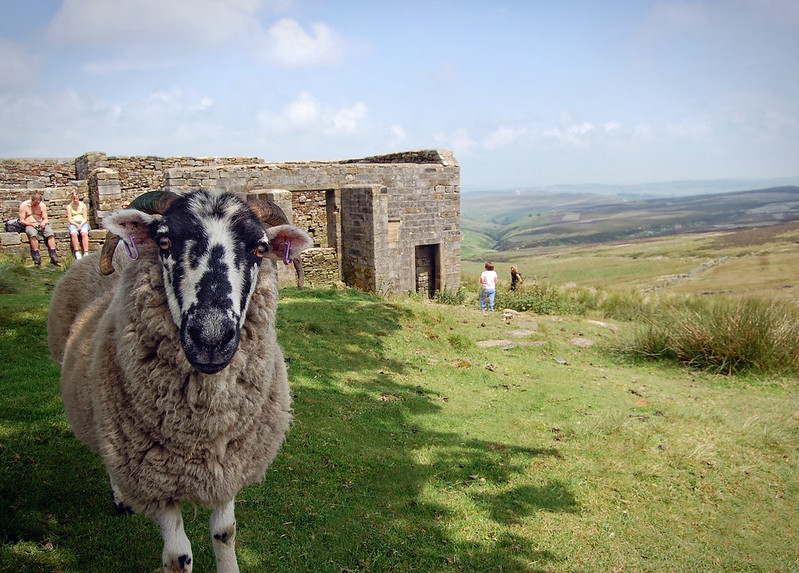
Although the Bronte sisters weren’t actually born in Haworth. However, it was during their time living at Haworth parsonage, when their father was parson. That they wrote most of their novels. The parsonage is now owned and maintained by the Bronte society. Keeping their memory alive and honoured by holding it as a writers house museum. The Bronte sisters saw Haworth as constantly changing. With the building and growth of the village in a Pennine style, with local stone construction including sandstone and granite . Living conditions were quite strained with improvements only being made after the Bronte’s passing. Even more expansion took place after the opening of the Keighley and Worth valley railway in 1867. The mills also transitioned too from their old format to an industrialised steam powered factory. As the surrounding settlement and the village as a whole rapidly industrialised. It ended up turning the area from its popular portrayal in Wuthering Heights. To what it is now. With the area not being the moorland that Emily Bronte was accustomed to.
Tourism

Tourism increased Haworth’s income with thousands of literary pilgrimages paying tribute to the Bronte sisters. Who pass through the town to visit the Parsonage. With many other events such as the 1940’s festival and the steampunk weekend. Haworth capitalises on its vintage style with festivals that take people back in time with a comfortable background. The steam trains that pass through the railway bring in tourists. Many interested in seeing the history of Yorkshire’s impact on the industrial revolution or just the old feel of railways. The Pennine way also passes through the town and the surrounding natural environment. Drawing tourists with the natural mind to pass through Haworth for the rest stop and the views.
3 For £30 January Deal
Quality shirts available at great prices to show your pride where you are from and showcase your Yorkshire heritage!
Only at yorkshiretshirts.com
